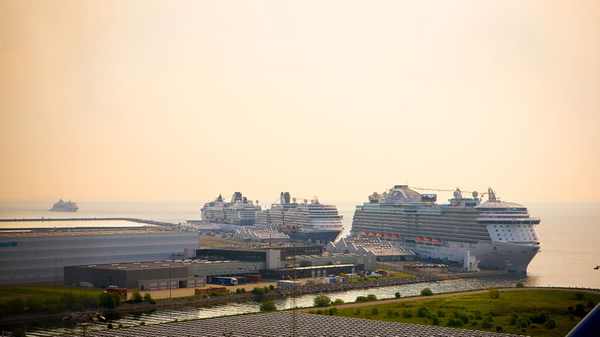Danish Shipping report finds flaws in EU ETS
Danish Shipping has flagged two key proposals in the EU’s ‘Fit for 55 package’, saying they are not complementary to each other and might ruin EU’s chances of cutting emissions by 55% by 2030.
 PHOTO: Cruise lines at Copenhagen Malmö Port . CMP
PHOTO: Cruise lines at Copenhagen Malmö Port . CMP
Danish Shipping represents more than 95% of the Danish merchant shipping fleet.
The report highlights a flaw in the implementations of these key measures, wherein FuelEU Maritime accounts for all greenhouse gas (GHG) emissions in the entire supply chain (well-to-wake), while ETS only looks at a portion of the GHG emission during the actual combustion (tank-to-wake).
This makes the calculation in the ETS system is much more limited, as it only sets a price on carbon dioxide emissions that are generated onboard a ship.
By comparison, FuelEU Maritime is more extensive and covers the overall climate footprint of extraction, refining, distribution, and finally total combustion.
"Both tools will reduce greenhouse gases, but if they are to function optimally and contribute to the most effective reduction, the two bills must be adjusted so that they fit better together," says Danish Shipping executive director Maria Skipper Schwenn.
Though both measures focus on driving the industry to low carbon fuels, the ETS should be applicable to all GHG emissions and cover the entire fuel value chain, recommends Danish Shipping.
Earlier this month, INTERCARGO joined The Union of Greek Shipowners (UGC) in embracing a proposed inclusion of commercial operators in the EU ETS, following concerns raised by the World Shipping Council (WSC) in January.






